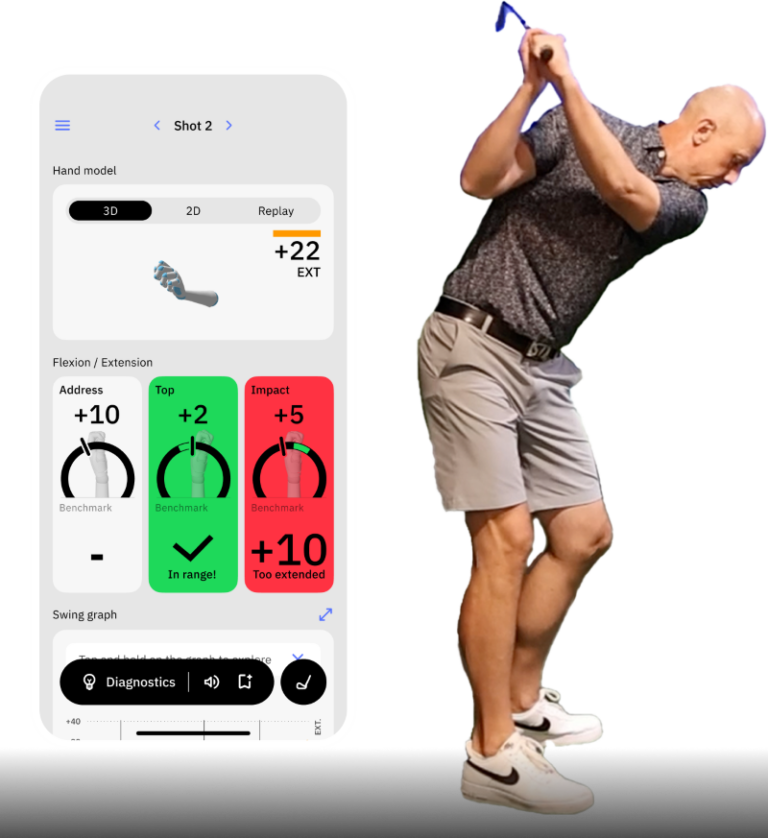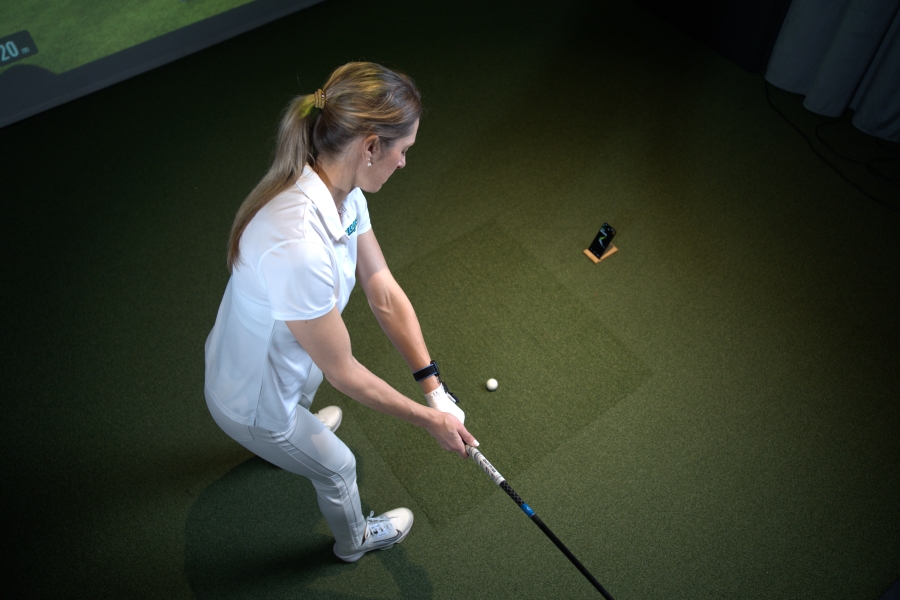How to Break 90 in Golf Consistently (20 Proven Tips + a 5-Week Practice Plan)
Breaking 100 feels like a huge milestone, until the very next round, when all you can think about is breaking 90. Welcome to golf, where satisfaction is always just one score away.
The truth is, shooting 88 puts you ahead of most golfers, but getting there doesn’t require perfection.
Too many players get caught chasing flawless swings instead of building a game that actually works. Let’s change that.
This guide will help you go from a hopeful mid-handicapper to someone with a real plan to break 90 consistently.
How to Break 90 in Golf Consistently (Key Takeaways)
If you are on a real journey to break 90 this season, save this guide. You can go through it one step at a time, ensuring you have all the necessary thoughts and actions in place.
However, if you want a quick rundown of what you need to do to break 90, here it is:
- Use forgiving clubs to reduce the impact of mishits.
- Leverage golf tech like HackMotion, video, and launch monitors to fix swing faults.
- Build a consistent pre-shot routine with visualization.
- Sharpen your short game to stop leaking strokes.
- Learn to scramble and turn tough lies into bogeys, or even pars.
- Practice with drills that provide real-time feedback.
- Understand how wrist angles control the clubface; excessive flexion or extension can lead to misses.
- Aim for the center of the green to stay out of trouble while giving yourself birdie chances.
- Take care of your body, better fitness and nutrition lead to better golf.
Contents
- 20 Actionable Tips to Consistently Break 90 in Golf
- Use More Forgiving Clubs
- Find a Golf Shaft that Matches Your Swing Speed
- Develop a Pre-Shot Routine
- Practice with a Purpose (and Some Technology)
- Learn How to Scramble
- Take the Right Club
- Learn to Feel the Clubface
- Learn How to Chip
- Reduce Three Putts
- Play a Familiar Golf Course Frequently
- Warm Up Before Your Round
- Adjust Ball Position Accordingly
- Know Your Position at the Top
- Compensate During a Round for Any Unwanted Shape
- Aim for the Middle of the Green
- Understand the Green
- Play it Safe
- Get Real Feedback (Not Just Swing Tips from Friends)
- Have a Go-To Shot
- Fix Your Slice
- The 5-Week Practice Plan to Break 90 in Golf
- FAQs
- Final Thoughts
20 Actionable Tips to Consistently Break 90 in Golf
Use More Forgiving Clubs
Modern game improvement golf clubs are built to mitigate slice shots, preserve ball speed, and manage spin on mishits.
The equipment is available to you, so take advantage of it. Going for a custom club fitting can help you determine if your equipment is the right fit for you.
Here are some examples of forgiving golf clubs that could help you when it comes to breaking 90:
- Drivers: Ping G440 Max, TaylorMade Stealth 2 Plus Driver, Callaway Elyte Driver, Cobra LTDx Max Driver
- Fairway Woods: Ping G430 Max Fairway, TaylorMade Qi10, Callaway Paradym Fairway, Titleist TSR 2 Fairway
- Hybrid: Titleist TSR2, Callaway Men’s Paradym, TaylorMade Stealth 2 Rescue
- Irons: Ping i230, Titleist T300, Mizuno JPX Forged, TaylorMade P790
- Wedges: Callaway Jaws MD5, Ping Glide Forged Pro, Cleveland RTX 6 ZipCore
- Putters: Ping Anser, Odyssey Toulon Series, Cleveland HB Soft Premier
Find a Golf Shaft that Matches Your Swing Speed
If you swing with more than 100 miles per hour with your driver, you should have a stiff shaft in your golf club. However, if you can’t quite get these speeds, a regular or senior shaft is best.
Too many golfers looking to break 90 have a shaft that is not flexible enough to promote forgiveness.
Here is a basic idea of what shaft flex you could need for every swing speed:
| Swing Speed (mph) | Recommended Shaft Flex | Description |
|---|---|---|
| Below 70 | Ladies (L) | Very flexible, promotes higher launch |
| 70-80 | Senior (A) | More flexible than regular, aids in distance |
| 80-90 | Regular (R) | Balanced flexibility for control and distance |
| 90-100 | Stiff (S) | Less flexible, more control, lower ball flight |
| Above 100 | Extra Stiff (X) | Very stiff, maximum control, lower ball flight |
Develop a Pre-Shot Routine
The pre-shot routine helps you clear the last shot from your mind, get set to hit this next shot.
A common pre-shot routine is to take one practice swing standing, looking down the line at the target. Then line up the clubface, come around the golf ball, look back at the target, and then take your shot
You can work to make the pre-shot routine more specific to your game, but the most important aspect is that you have one.
Practice with a Purpose (and Some Technology)
When you visit the golf driving range, avoid continually hitting shots without a plan in place.
Simply hitting golf shots is more of an exercise than an actual attempt to improve your golf game.
Practice with technology like the HackMotion on the driving range.
You can use the HackMotion interactive drills like the Motorcycle Drill and Release Drill to help you learn in real-time.
Learn How to Scramble
Do you ever find yourself in the rough or blocked out behind a tree because of your tee shot? This is common in your handicap range, and learning how to scramble could be the way to fix it.
Scrambling is learning to get up and down from anywhere within 100 yards.
To become better at scrambling, work on golf shots from 100 yards and in and vary the ball flight of your shots. Distance control is the most important thing to practice with shots like this.
Take the Right Club
Golfers yet to break 90 may fall victim to incorrect club selections and distance readings.
Most golfers underclub themselves. Learn your carry distances and become familiar with them. If you hit a 7 iron 150 yards, you probably carry it about 145 yards.
Learn to Feel the Clubface
The clubface is what controls the direction of your golf ball. If the clubface is open at impact, the ball goes right; if it’s closed at impact, it goes left.
If you want to break 90 in golf, you have to have some idea of what the clubface is doing.
HackMotion can teach you how to control the clubface.
Try using the release drill.
Perfect Your Release with HackMotion
Fine-tune your release for consistent contact. Start with a short swing to master control before adding power.
HackMotion Release Drill – Step by Step
- Start in your normal impact position.
- Take the club back so it is in the first parallel position.
- Swing through impact and focus on the hands leading and feeling less extension in the lead wrist.
- Stop when the club is parallel to the ground again.
- Check your HackMotion results and see if your clubface remained square throughout the release drill.
Learn How to Chip
You’re going to miss greens; it’s part of the game. A good chip can turn that miss into a simple, makeable one-putt to save par or bogey.
Keep things simple by focusing on low chips or bump-and-run shots; the lower you keep the ball, the more control you’ll have.
For more consistency, try keeping your lead wrist slightly flexed through impact.
Reduce Three Putts
You have likely heard many commentators and coaches harp on the importance of your putting stroke, and they are right.
Golfers with a handicap of 20 to 25 three putt 19.1% of the holes they play. In addition, those with a handicap higher than 26 record three putts on 25% of their holes.
According to Shot Scope.
HackMotion can be used on the putting green to develop more consistency in your stroke.
There is no perfect wrist angle in putting, but you can learn to keep yours more consistent and reduce the number of times you three putt.
Play a Familiar Golf Course Frequently
One of the easiest ways to break into the 80s is to play your home course often.
Repeated rounds help you build “members’ knowledge”, you learn where to land the ball, which clubs work best, and how to use the course to your advantage.
The more familiar you are, the more confident and precise your decisions become, especially with club selection and distance control.
Warm Up Before Your Round
Amateurs are notorious for skipping warm-up and heading straight to the first tee to let their driver rip.
This leaves you at risk of injuring your back, neck, and knees. It also hampers you from producing optimal rotation and power during your swing.
- Do some stretches to help move your arms, shoulders, back, and hips.
- Hit a few balls at the driving range.
- Make some smaller chip shots.
- Finish with at least 10 putts from varying lengths.
Instead of getting to the 4th hole and finally feeling warmed up, you’ll be ready to go right from the start.
Adjust Ball Position Accordingly
At this point of your golf career, you are likely familiar with the front, middle, and back ball positions.
However, you still get it wrong every now and then, which causes you to top, chunk, or slice your ball.
A simple rule of thumb is to start with the ball on the inside heel of your lead leg for tee shots.
Next, you move it marginally back for fairway wood strikes and keep the sequence going until it sits mostly in the middle for short irons and wedges.
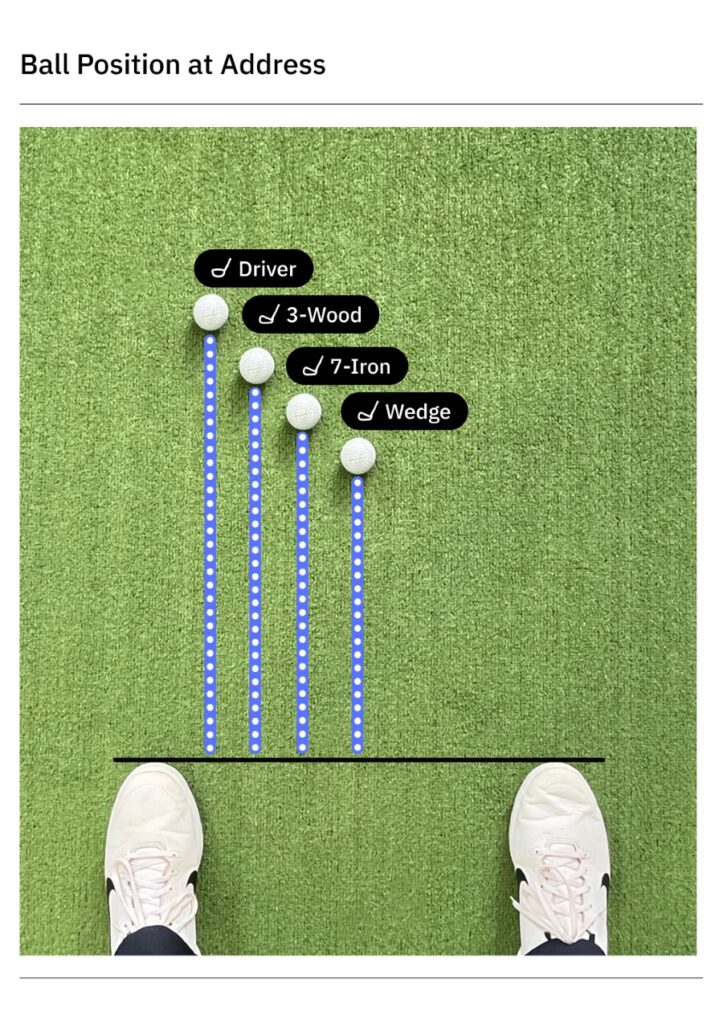
Know Your Position at the Top
Do you know where the club is when it’s at the top of your backswing?
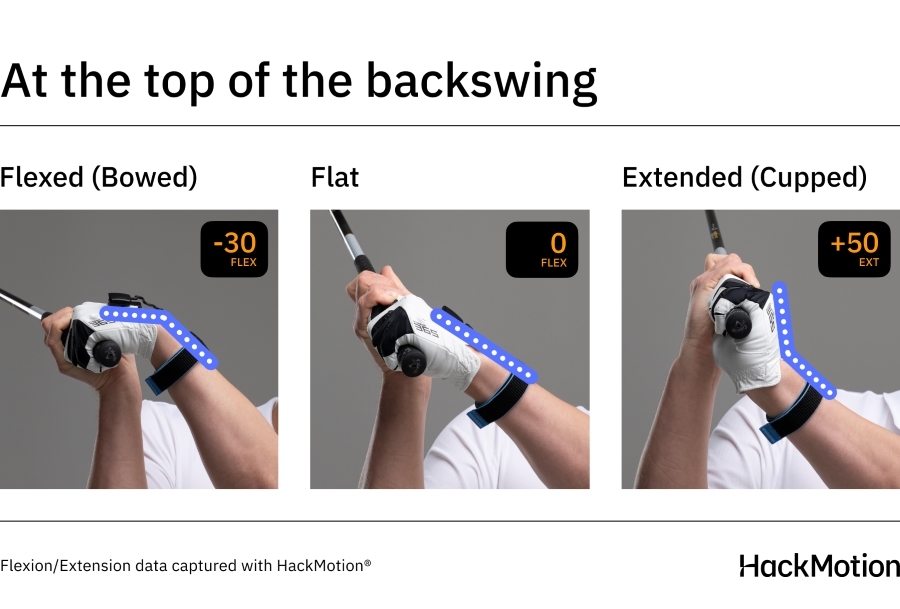
Start practicing with the HackMotion Top drill.
Top Drill in HackMotion
Train your top position by mastering optimal wrist angles. Challenge yourself to reach the ideal wrist position during a full-speed backswing.
HackMotion Top Drill – Step by Step
- Full-Speed Backswing: Address the ball normally with HackMotion on. Make a rapid backswing, just like a real shot, no pausing.
- Check Wrist Angles at the Top: As soon as you reach the top, look to see whether you hit the desired wrist position in the HackMotion green zone.
- Transition & Swing Through: From that checked top position, continue down smoothly. Blending the correct top-of-swing wrist angle into your normal downswing sequence is the idea.
- Refine: You may need to do a few “false starts”: go full speed to the top, pause for just an instant, then come back down. Gradually reduce the pause until you can hit the desired top position on a fast backswing.
Compensate During a Round for Any Unwanted Shape
If you are in the middle of a round and a problem comes up, start making simple adjustments until you can fix it after the round.
Aim a little left if needed, put the driver away, and take a 3-wood out, etc.
Make a slight change to get through the round, and then head to the driving range to determine what the issue is.
Compensating from one round to the next is not a smart idea, but mid-round, you have to work with what you have that day.
Aim for the Middle of the Green
Avoid attacking the flag on approach and aim for the middle of the green. You are not a low handicapper or professional who needs birdies.
To achieve your goal, you need bogies and the odd par. If the par total at your home course is 72, then +17 is good enough to break 90. The middle of the green is a perfect target.
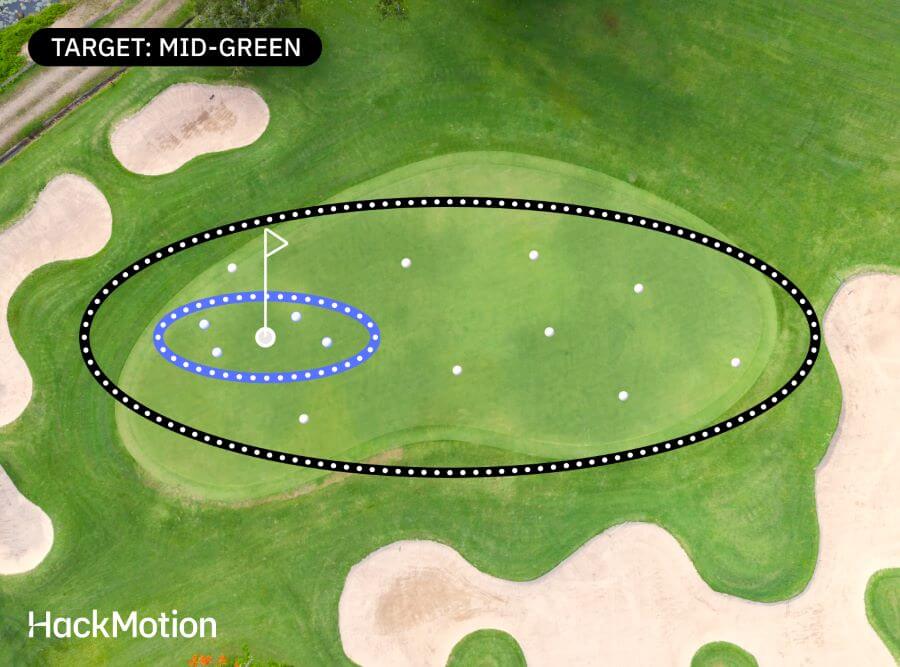
Understand the Green
Understanding how the green slopes can work in your favor is a big advantage, especially if you land your approach in the right spot.
Just as important is improving your green reading skills so you can judge both break and speed. Using slope and pace to your advantage helps you leave makeable putts and avoid costly three-putts.
Play it Safe
You don’t need birdies or eagles to break 90; steady bogeys with the occasional par will do the job. There’s no need to play aggressively.
A smart tee shot with a 5-wood or hybrid sets up a manageable approach, and even if you miss the green, you’ll often have a simple chip to save par or make bogey.
On tough par 4s, don’t be afraid to play for a 5; that strategy won’t hurt your chances of breaking 90, it’ll help them.
Get Real Feedback (Not Just Swing Tips from Friends)
If you’re serious about breaking 90, stop guessing and start getting feedback that matters. Many high handicappers rely on advice from playing partners who are making the same mistakes.
Instead, invest in real feedback, whether it’s a few lessons from a certified instructor or data from a tool like HackMotion.
HackMotion acts like a coach on your wrist, giving you instant feedback on your wrist angles throughout the swing so you can see what’s causing issues like flipping, casting, or an open clubface.
Diagnostic tools and professional input eliminate the guesswork from improvement. Once you understand what’s happening in your swing, you can work on the right fixes with a purpose.
Have a Go-To Shot
When your golf ball is in a tough spot or your swing feels off, have a go-to shot you can trust.
Typically, this is a situation where you choke up on the club, shorten your swing, and get the ball back into play. When you have this, your chances of being able to break 90 and keep the ball in play are greatly improved.
Fix Your Slice
To keep your scores under 90, you have to get rid of the slice. When you are slicing the ball, the clubface is open at impact. Start by making sure the clubface is square at the top of your backswing.
If it’s square at the top, you will have a much easier time squaring the clubface at impact. If you struggled with a slice for years, try the slice fix course and learn to square the clubface.
Click here to access the free course to fix your slice permanently!
The 5-Week Practice Plan to Break 90 in Golf
Now that you have all the tips you need to start breaking 90, it’s time to put them to work.
The following practice plan is designed to be simple, realistic, and repeatable. You’ll practice two times per week for 45 minutes, focusing on the skills that most directly lower scores for golfers trying to break 90.
This is a five-week plan, and each week outlines the exact focus for both 45-minute practice sessions that week. Rather than jumping between new drills every session, you’ll repeat the same priorities twice to build consistency and confidence.
After completing the five weeks, take an honest look at where you’ve improved and where you’re still leaking strokes. From there, you can repeat specific weeks or adjust the plan based on what your game needs most.
Weekly Warm-Up (Use Before Every Practice Session)
Use this same warm-up before each 45-minute practice session throughout the five weeks. The goal is to loosen your body, find rhythm, and prepare for quality practice time.
Total time: 5–7 minutes.
- Light movement (1–2 minutes): Loosen your shoulders, arms, hips, and upper back with simple rotations and stretches.
- Slow, short swings (2 minutes): Hit easy half-swings with a wedge or short iron. Focus on balance and center contact, not distance.
- Progress to smooth full swings (2–3 minutes): Gradually lengthen your swing and add speed only as your body feels ready. Stop short of full power.
Week 1: Clubface Control & Contact
Goal: Reduce big misses and improve strike consistency.
- Practice the HackMotion Release Drill with short swings, then full swings.
- Focus on squaring the clubface through impact, not swinging harder.
- Hit basic bump-and-run chip shots to predictable landing spots.
- Practice lag putting from 20–40 feet to reduce three-putts.
- Learn and trust your carry distances, not total distance.
- On the course: aim for the middle of the green and accept bogeys.
Week 2: Top Position & Start Direction
Goal: Improve shot direction and reduce slices or pulls.
- Practice the HackMotion Top Drill to clean up your backswing position.
- Pair top-position work with smooth, controlled full swings.
- Chip from different lies (tight, rough, uphill, downhill).
- Practice short putts inside 6 feet to build confidence.
- Use the same pre-shot routine on every shot.
- On the course: prioritize keeping the ball in play over distance.
Week 3: Distance Control Inside 100 Yards
Goal: Turn missed greens into bogeys instead of doubles.
- Practice partial wedge shots from 50–90 yards with consistent tempo.
- Use HackMotion feedback to keep wrist angles stable on shorter swings.
- Focus on low chips and rollout shots.
- Practice putting for speed rather than perfect reads.
- Begin developing a reliable “go-to” swing for pressure situations.
- On the course: play conservative targets and trust your short game.
Week 4: Scrambling & Trouble Shots
Goal: Escape bad situations without compounding mistakes.
- Practice punch shots and knockdowns with a shortened swing.
- Work on chipping from poor lies and uneven stances.
- Use HackMotion to maintain clubface control on abbreviated swings.
- Practice pressure putting (must-make putts, one-ball drills).
- Learn when to pitch back to safety instead of forcing hero shots.
- On the course: protect your score and eliminate doubles.
Week 5: Scoring Simulation & Consistency
Goal: Blend skills together and prepare to score.
- Mix full swings, wedges, and trouble shots randomly during practice.
- Revisit both the Release Drill and Top Drill.
- Practice up-and-down scenarios around the green.
- Putt from realistic on-course distances instead of repeating the same drill.
- Identify what still feels uncomfortable — that’s your next focus.
- On the course: commit to conservative strategy and smart decisions.
Practice Plan Recap: Weekly Focus Overview
| Week | Primary Focus | Full Swing Priority | Short Game Focus | Putting Focus |
|---|---|---|---|---|
| Week 1 | Contact & Clubface Control | Release Drill | Basic chipping | Lag putting |
| Week 2 | Direction & Top Position | Top Drill | Mixed lies | Short putts |
| Week 3 | Distance Control | Partial swings | 50–90 yard shots | Speed control |
| Week 4 | Scrambling | Punch shots | Bad lies | Pressure putts |
| Week 5 | Scoring Simulation | Mixed practice | Up-and-downs | On-course distances |
FAQs
Is it hard to break 90 in golf?
Yes, it is hard to break 90 in golf because it takes time, practice, intelligent planning, and the correct equipment. Backing up these claims is the fact that only 26% of golfers break 90.
However, once you understand your swing and the game, it becomes easy to break 90 by playing safe, aiming for the middle of the green, and improving your short game.
How long should it take to break 90 in golf?
It can take a month or years to break 90 in golf. It comes down to talent and hours of practice. However, progress can speed up if you use technology such as HackMotion to improve your swing mechanics.
What percentage of golfers in the world can break 90?
According to the PGA, only 26% of golfers break 90, while 29% of all amateurs consistently shoot between 90 to 99.
How do you practice breaking 90?
You practice breaking 90 by working on your short game and scrambling to help you escape challenging situations and get up and down from the greenside. Next, golfers need to learn to control the clubface so that they can hit straight golf shots.
Final Thoughts
Learning to break 90 in golf is a process that typically takes several months or years.
However, if you play with forgiving clubs and the correct shaft flex, master your short game, and play it safe, you will break 90 consistently. Start using the break 90 practice plan to get closer to your goals.
If you want a partner to help you get your scores in the eighties, use our directory to find a golf coach near you who uses HackMotion to help golfers improve contact, direction, and consistency.
